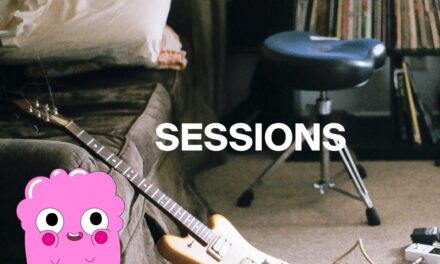
MAY 2, 2025
full tilt
The Power of Beta Readers and ARCs
Creating means iterating and learning from what you’ve created.
For books, that means more than writing a lot to hone your craft. Arguably, the iterations derived through the editing process are more important than the actual writing. That’s when other real people get their hands on your writing that the best and most important refinements start.
In the fiction publishing world, after an editor makes their notes, beta readers are engaged to help further refine the book. And after that, advance reader copies (called ARCs in the publishing world) are sent out to build marketing buzz.
This process is key to successfully launching fiction books, and it translates 100% for nonfiction writers. Here’s how beta readers and ARCs can help refine your book, connect with your audience, and ultimately set your book up for success.
What are beta readers?: Think of beta readers as a test audience for your book. Like a movie screening before its release, beta readers should be a small group who fit your ideal audience. And they can’t be casual readers.
Beta readers will approach your book looking for gaps, confusion, or opportunities that you might not see. They test the clarity of your concepts, ensure your writing isn’t overly technical (or too simplistic), and note sections that might cause your reader to lose interest.
Say you’re writing a guide to social media marketing for beginners. A skilled beta reader might point out that your step-by-step chapters would make more sense reordered or that some of your examples feel outdated.
Where to find beta readers: The best beta readers come from your target audience. Search in industry-specific Facebook groups, LinkedIn networks, or even among your newsletter subscribers.
Reach out to subject-matter experts. Look for other authors who’ve published a book on the same topic. This is a good opportunity to expand your professional network while improving your book.
Best practices for beta readers:
- Timing matters: Share your manuscript after completing one or two rounds of self-editing, but before it reaches professional editing. Beta readers work best when you’ve done some heavy lifting.
- Be clear about expectations: Give beta readers guidance about what kind of feedback you seek. Broad questions like “Did you like it?” won’t be nearly as helpful as “Were my explanations clear?” or “Was there any section you found confusing?”
- Diversify your readers: Include a mix of readers to reflect your audience’s diversity. If your book targets entrepreneurs, find beta readers across industries or career stages.
What are advance reader copies (ARCs)?: After beta readers help you polish the book, advance reader copies (ARCs) are where marketing starts. ARCs are preview versions of your book to share with reviewers, influencers, and peers before its official launch.
Unlike beta readers, ARC recipients typically don’t provide feedback. Instead, they help create buzz by writing reviews, sharing testimonials, or spreading the word about your book launch. For nonfiction authors, ARCs help solidify your authority in your niche and establish credibility.
When and how to use ARCs: You’ll want to send out ARCs three to six months before your launch date. Your book doesn’t need to be 100% finalized (though it should be as close as possible) because ARCs are about getting early endorsements and visibility.
You can print ARCs or distribute them digitally. But print is usually ideal — your reader can’t post a picture on social media holding up a digital copy of your book.
Print-on-demand makes it easy to create professional-looking ARCs. You just need to create a unique version of your book, including a note explaining that this is an advance copy. This usually means something on the cover to indicate the book isn’t for resale and a page inside asking your advance readers to leave a review.
Make it easy to leave a review. Provide a list of platforms or websites (like your site, Goodreads, and Amazon) where they can post feedback. Consider including a QR code that goes to the review page. Or leave your email address and ask for testimonials about the book.
Best practices for ARC readers:
- Build a list of recipients: Research influencers, journalists, and leaders in your field who might be willing to read and endorse your book. Don’t be afraid to reach out to your network, too.
- Create a professional-looking ARC: Use platforms like Lulu, owner of Tilt Publishing, for print copies, or tools like BookFunnel for digital ones. You don’t need the final cover design, but your ARC should look polished and professional.
- Include a call to action: Encourage recipients to share their thoughts on social media or leave reviews and give them a deadline to maximize visibility ahead of your launch.
If you’re serious about self-publishing, don’t skip these steps. By investing in beta readers and ARCs, you’re investing in your readers, your credibility, and your book’s long-term impact.
Helpful Resources:
Ready to start your book adventure? Tilt Publishing is ready to help.
tilt publishing book club
- No. 1 on Forbes … Congrats to Tilt Publishing author Justin Moore, whose book, Sponsor Magnet, was named as one of the six must-read books for creators.
- Avoid the spotlight effect … Get to work and get your book done. [Lulu]
- Bad writing advice … Eric Puchner delivers two poor pieces of advice for writers. [Craft with Kat]
- Bygone Big 5 … Big-name publishers may work for big-name authors, but others play the publishing game, too. [Dispatch]
things to know
Money
-
Big boost: Full-time digital creators jumped to 1.5M in 2024, up from 200K in 2000, according to a report by the Interactive Advertising Bureau. It also finds that creator revenue has grown five times the rate of traditional media revenue. [Axios]
Tilt Take: Content entrepreneurs are the new media publishers, and their numbers will only grow even bigger in the coming years.
Audiences
-
Spot up: Spotify says its monthly active users grew 10% year over year in the first quarter (678M), with premium subscribers growing 12% (268M) in that same time. [Podnews]
Tilt Take: Interesting that the type of content with the most diverse platform distribution continues to see such big growth.
Tech and Tools
-
Unpaid sponsored: Google’s experimenting with labeling some search results as sponsored even though they’re not paid ad placements. Google says it’s testing it because the sponsor-labeled search results are for commercial queries. [Search Engine Land]
Tilt Take: Searchers probably won’t care, but advertisers will. Blurring the line between organic and paid content makes it harder to track performance and attribution. -
Crackdown: Meta says it won’t let creators be eligible for monetization if they post long, distracting content, often with an inordinate amount of hashtags. They also won’t give the revenue love to creators of spam networks-the hundreds of accounts that share the same spammy content that clutters people’s feeds. [Social Media Today]
Tilt Take: Creators who truly value their audiences won’t feel the pinch. In fact, their views may go up as the spammy revenue-focused creators give up.
And Finally
-
Tune in: LinkedIn’s launching five original shows from business-focused creators, including the host of The Diary of a CEO and the founder of Sprinkles Cupcakes. [Business Insider]
Tilt Take: Original programming makes sense given LinkedIn’s growth as a go-to platform for business-related news and advice. Plus, video viewership is already up 36% this year vs. last.
business of content
- Career Longevity Is the New Retirement Plan (Content, Inc.)
- The Rise of the Content Entrepreneur (This Old Marketing)
- We Love Content Entrepreneur Events So Much, We Bought One! (Publish & Prosper)
- ICYMI: Solo Content Entrepreneurs Need a Backup Plan To Stay in Business
Get more of the Full Tilt stories on TheTilt.com.
Know a content creator who’s going full tilt? DM us or email [email protected].
Want to advertise on The Tilt? Go here.
Or email us at [email protected].
Was this email forwarded to you? Get your own sub here.
Copyright ©2025 Lulu Press, Inc. All rights reserved.
Update your preferences | Unsubscribe | PO Box 12018, Durham, NC 27709





